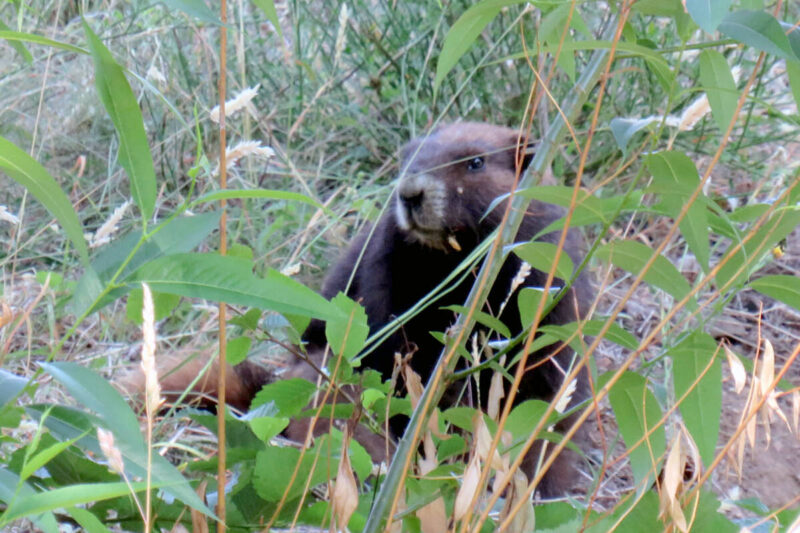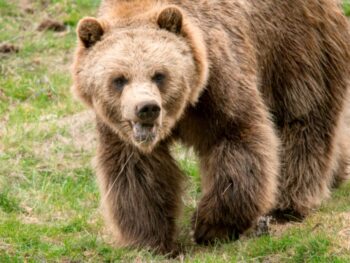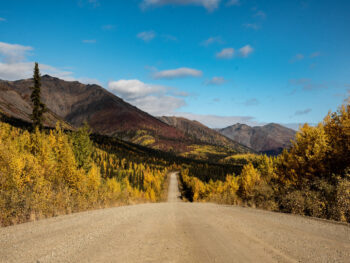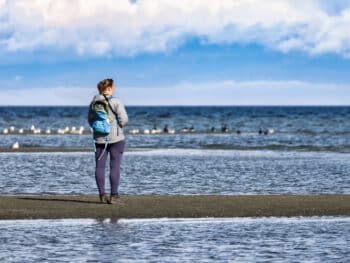A Vancouver Island marmot is back in custody after hitting the trail, most likely looking for love.
Vancouver Island marmots are few and far between, so it’s no surprise that Camas, a young male originally released last year on Gemini Mountain, southwest of Nanaimo, didn’t hang around long when he discovered his prospects of finding a mate were slim to none.
At least that’s a theory Adam Taylor, executive director of the Marmot Recovery Foundation, is working with to to explain why Camas went walkabout.
Camas was bred and raised in captivity at the Calgary Zoo as part of a recovery effort to raise the species’ population, which the foundation estimates is about 200.
READ MORE: VIDEO: ‘Disgustingly cute’ marmots start new life on B.C. ski hill
Marmots are tracked via radio signals emitted from tiny surgically implanted radio transmitters, which within the limitations of the technology, give a sense of the animals’ movements. Taylor said after being released on Gemini Mountain, Camas almost immediately headed over to nearby Green Mountain.
“There he encountered another marmot and he settled down, hibernated there, and we really thought this was going to be his home,” Taylor said. “And then, this spring, we were having a really hard time pinning him down … we couldn’t figure out why and then, [July 5], we got a report from a fellow in Errington saying I’ve got this marmot in my backyard and sent us a couple of pictures and, sure enough, there’s this Vancouver Island marmot in their backyard.”
READ MORE: Vancouver Island photographer releases book about endangered local marmot
The foundation immediately sent a team which trapped the marmot in a neighbouring backyard, ending a journey that started about May 29, which was the last time researchers had caught a radio signal. Taylor said the foundation team wasn’t sure the marmot they’d caught was Camas until they were able to check his ear tags.
“So, 30-plus kilometres from his home – that’s a straight-line distance – he’d wandered through the mountains to end up in somebody’s backyard…” Taylor said. “As to why he took to roaming, we don’t have a positive answer for you because I can’t ask him, but there’s a pretty decent idea. He’s a young male and young males often disperse from their natal colonies looking for mates.”
READ MORE Life on the edge: Will Arnett narrates new Netflix docuseries on Vancouver Island
Taylor said if the other marmot on Green Mountain was the same sex or if another adult male had moved into the area and started to mate with the only female there, that would leave Camas with pretty slim prospects for reproducing, so it’s not surprising that he would move on.
“What is surprising is they don’t get lost more often,” he said. “You have to imagine, Vancouver Island marmots are still phenomenally rare on the landscape. We’ve got a couple hundred of them, total, in the wild and they’re stretched over this really vast landscape … living in these small meadows on the tops of mountains … Camas went the wrong way and just kept going.”
It’s also surprising, Taylor said, that the marmot descended to such a low elevation, although it has happened before. Bamfield Marine Sciences Centre students found one on a beach there, while another was found in a rock quarry near Nanaimo.
“I know 30 kilometres doesn’t sound like much, but this terrain, these are pretty serious up-and-down mountains, so he covered a lot of ground really fast…” Taylor said. “Marmots aren’t particularly well-adapted to surviving in the forest. Where they can’t see their predators, they’re at a real disadvantage and we know that their survival rates are really low, so he’s certainly a survivor and managed it, but I don’t know how much longer he would have lasted.”
Taylor said the foundation is incredibly grateful to the people who reported the marmot’s arrival in their yard. Camas is now at the Tony Barrett Mount Washington Recovery Centre where researchers will keep an eye on him for a while to make certain he’s healthy before he is re-released later this month.
Plan your adventures throughout the West Coast at westcoasttraveller.com and follow us on Facebook and Instagram @thewestcoasttraveller. And for the top West Coast Travel stories of the week delivered right to your inbox, sign up for our weekly Armchair Traveller newsletter!











 Victoria photographer shares her journey across Canada in ‘A Ribbon of Highway’
Victoria photographer shares her journey across Canada in ‘A Ribbon of Highway’